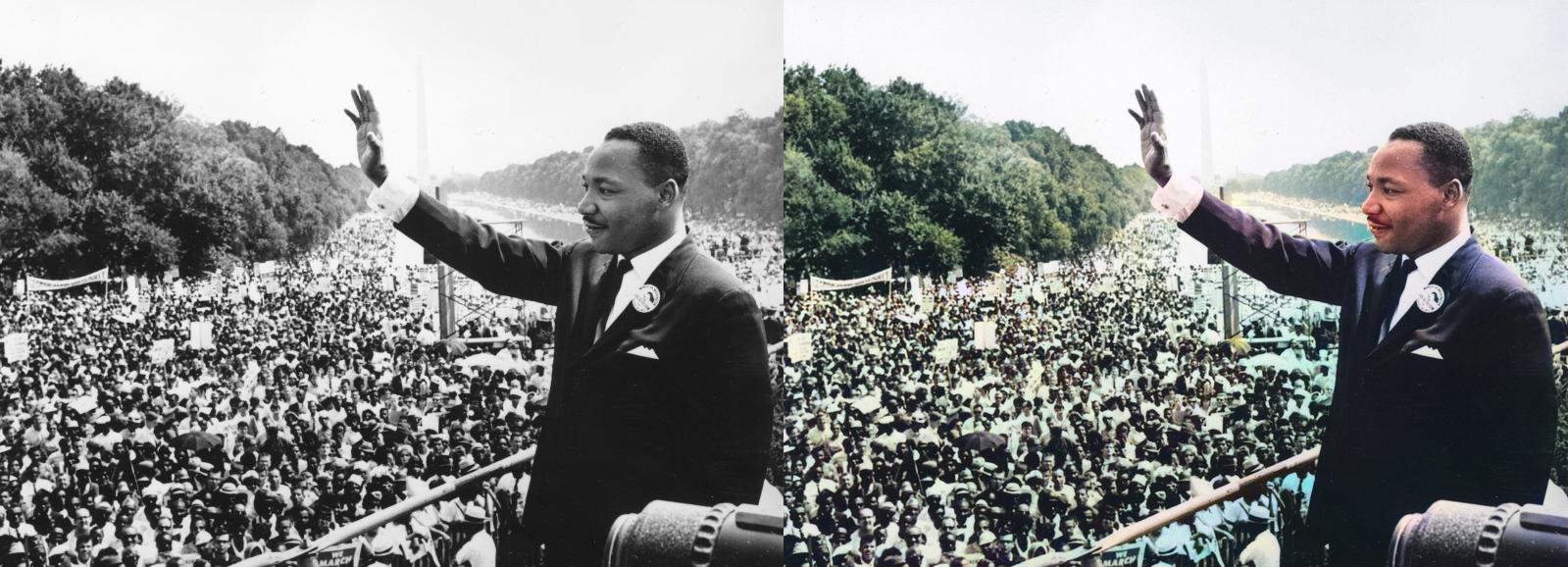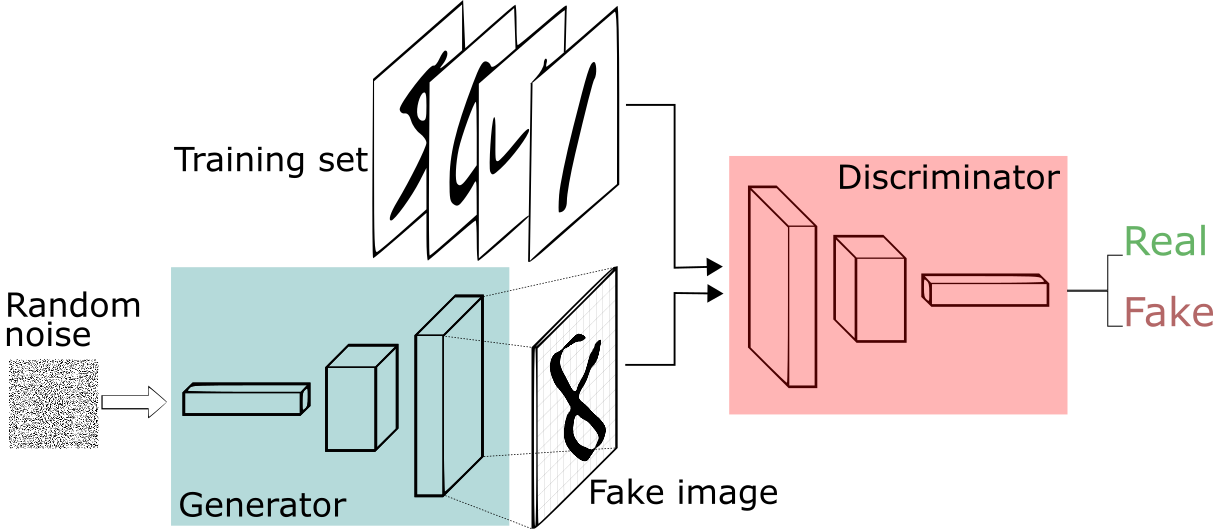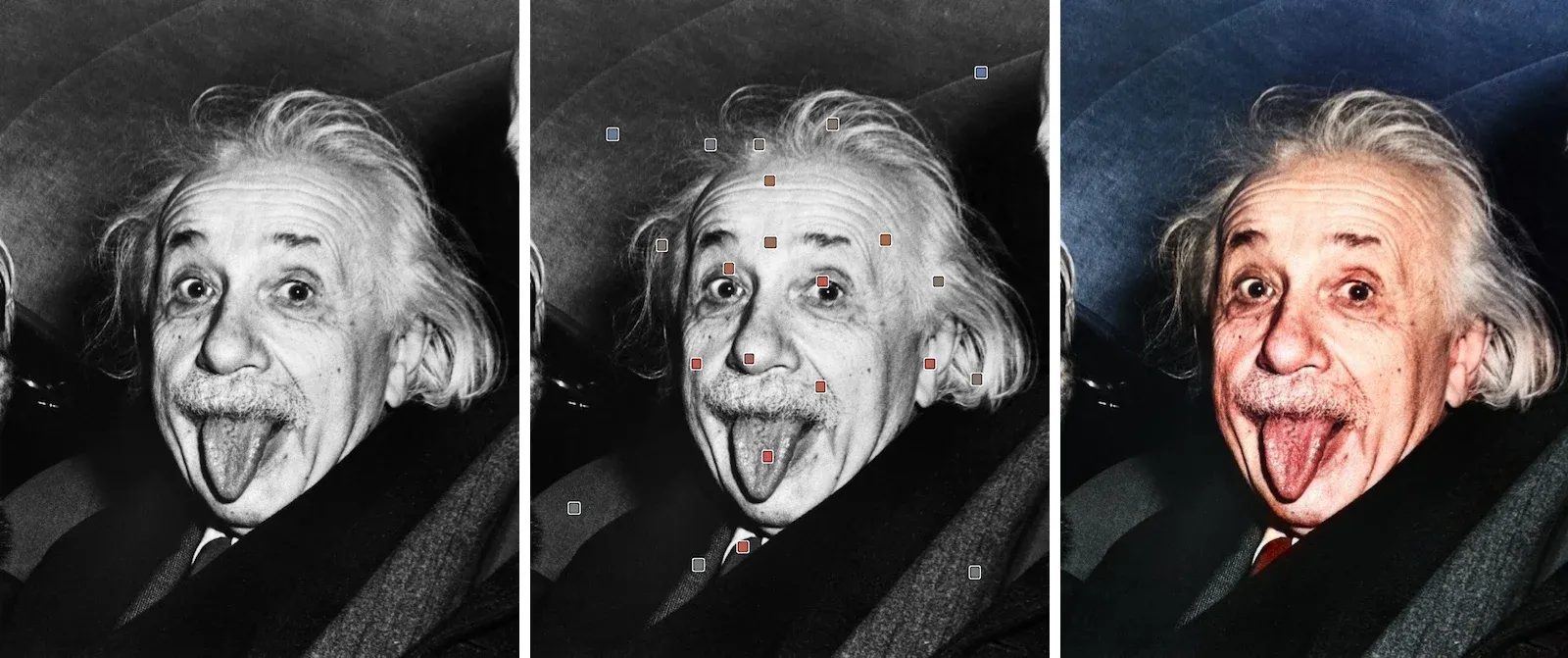How Does AI Colorization Work: Techniques and Algorithms Behind

Image coloring has been a task that has fascinated humans for decades. However, in the last decade, artificial intelligence has made a quantum leap in image colorization, offering a way to create vibrant and realistic images with just a click of a button. In this article, we'll explain exactly how artificial intelligence image colorization, also known as AI colorization, works.
What is AI colorization?
AI colorization is a technique that uses deep learning algorithms to add colors to a black and white or grayscale image. The technique is based on the idea that patterns in an image can be learned and recreated through artificial neural networks.
The process of coloring images with AI begins with the creation of an artificial neural network. This neural network is fed with a large data set of color and black and white images. The algorithm uses this data to learn patterns in the images, such as how objects reflect light and how colors combine to create shadows and highlights.
Once the neural network has learned these patterns, it can apply them to a black-and-white or grayscale image to add colors realistically. The neural network takes the input image and divides it into small parts, each of which is processed individually. The neural network then applies the learned color patterns to add colors to each part of the image, creating a complete color image.
How AI colorization works
AI colorization uses two main types of deep learning algorithms: convolutional neural networks (CNNs) and generative adversarial networks (GANs).
Convolutional Neural Networks (CNN)
Convolutional neural networks are a deep learning technique used to process image data. In the context of AI colorization, a CNN is used to learn color and texture patterns in color images. These patterns are then applied to a black and white or grayscale image to create a color version of the image.
To train the CNN, large data sets of color and black and white images are provided. The CNN uses this data to learn to associate color patterns with objects in the images. For example, the CNN can learn that the sky is usually blue and grass is usually green. Once the CNN has been trained, it can be applied to new images to add colors realistically.

image from Towards Data Science where you find more detail information about CNN.
Generative adversarial networks (GAN)
Generative adversarial networks (GANs) are a type of deep learning algorithm used in AI coloring to create even more realistic images. A GAN uses two different neural networks: a generative network and a discriminative network.
The generative network is trained to generate color images that resemble black and white or grayscale input images. The discriminative network, on the other hand, is trained to distinguish between images generated by the generative network and real color images.
During training, the generative network tries to trick the discriminative network into believing that its images are real. The discriminative network, on the other hand, tries to identify the images generated by the generative network and separate them from the real color images. Over time, the generative network learns to generate color images that are increasingly difficult to distinguish from real images.

Image from Thalles' blog where you find more detail information about GANs.
The combination of a CNN and a GAN can create an even more effective AI colorization technique. The CNN can learn color and texture patterns in images, while the GAN can create even more realistic images.
How to use AI colorization
There are several ways to use AI colorization. One option is to use an application or website that already has a neural network trained for image colorization. These sites typically allow users to upload a black and white or grayscale image and then automatically apply colors to the image.

Another option is to use deep learning software, such as TensorFlow or PyTorch, to create a custom neural network for image colorization. This would require a greater understanding of deep learning and a large amount of image data to train the neural network.
It is important to note that AI colorization does not always produce accurate results. The technique works best on images with clear and predictable patterns, such as portraits or landscapes, but may struggle on images with complex or unknown patterns.
In addition, AI colorization should not be used to replace existing color images. Instead, it should be considered as a tool to enhance black-and-white or grayscale images and provide a different perspective on an image.
AI Colorization in RoutineHub Shortcuts
Some of the shortcuts developed by the Routinehub community use AI colorization technology to add color to images.
One of the most popular shortcuts on Routinehub.co that uses AI colorization technology is "AI Image Colorizer". This shortcut allows users to upload a black and white or grayscale image and automatically add colors to the image using a convolutional neural network. The shortcut uses a pre-trained neural network for image colorization, which means that the user does not need to have deep learning skills to use the tool.

Allowing users to add color to a black and white or grayscale image using a convolutional neural network. It also allows users to manually adjust the colors in the image, giving more control over the final result.
In addition to these two shortcuts, there are several others on Routinehub.co that use AI colorization technology to enhance images. These shortcuts typically use convolutional neural networks and generative adversarial networks to generate color images that are realistic and accurate.
In general, AI colorization technology has enabled the shortcut developers at Routinehub.co to create powerful tools to enhance black and white or grayscale images. As the technology continues to advance, we are likely to see more tools and automations that use deep learning technology to enhance images on iOS devices.
Final Thoughts.
AI colorization is an exciting technique that has advanced significantly in the last decade. Using convolutional neural networks and generative adversarial networks, this technique has opened the door to a new way of adding color to images. While AI colorization does not always produce accurate results, it is a powerful tool for enhancing black-and-white or grayscale images and offering a new perspective on an image. As technology advances, it is exciting to imagine how AI colorization could change the way we see and understand history through images.